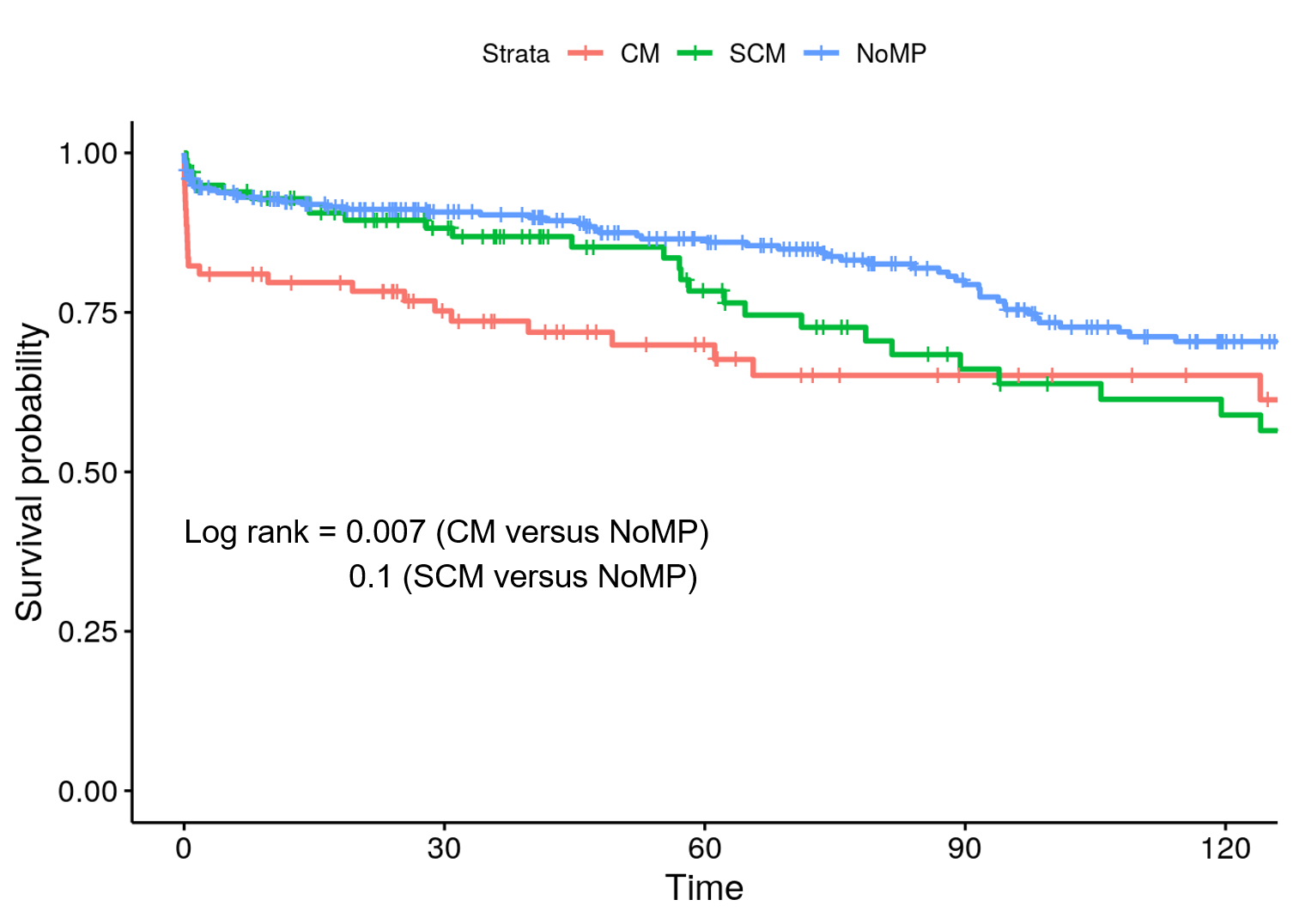초록접수 현황
| 20F-170 | 구연 발표 |
Early and Long-term Surgical Outcomes in Patients with Acute Type A Aortic Dissection associated with Malperfusion syndrome
Hongsun Kim, Kiick Sung, Wook Sung Kim, Dong Seop Jeong, Suryeun Chung, Yang Hyun Cho
Departments of Thoracic and Cardiovascular Surgery, Samsung Medical Center, Sungkyunkwan University School of Medicine, Seoul, Korea
Purpose : Acute type A aortic dissection (ATAAD) is a surgical emergency condition, and surgical mortality remains high. End-organ malperfusion, especially with clinical sign of organ dysfunction, is well-known to be associated with dismal prognosis. However, long-term surgical results in ATAAD with malperfusion is unclear.
Methods : From November 1995 to December 2018, 470 consecutive patients with ATAAD underwent an emergency operation. We categorized the patients into 3 groups: clinical, subclinical, and no malperfusion. Clinical malperfusion (CM) was identified by signs or symptoms of organ dysfunction (n = 79). Subclinical malperfusion (SCM) was defined as laboratory or imaging findings of organ hypoperfusion without signs or symptoms (n = 99). Patients with no evidence of malperfusion were defined as having no malperfusion (No-MP, n = 292).
Results : The mean patient age was 57.4 ± 14.7 years, and 262 patients (48.1%) were male. Five-year and 10-year overall survival were 82.1 ± 1.9% and 67.0 ± 2.8%, respectively. Early survival in CM (82.3%) was worse than that in No-MP (95.9%, p<0.001), but survival in SCM (97.0%) was not significantly different with that in No-MP (p=0.6). Similarly, overall survival in CM was worse (p=0.007), and SCM was comparable with No-MP (p=0.1). On multivariable Cox regression analysis, older age, clinical malperfusion, and longer CPB time were predictor of overall mortality.
Conclusion : Although patients with clinically significant malperfusion showed worse outcome after surgery than patients with SCM or no-MP, early survival rate was still favorable. Operative delay only due to malperfusion may not be justified.
Methods : From November 1995 to December 2018, 470 consecutive patients with ATAAD underwent an emergency operation. We categorized the patients into 3 groups: clinical, subclinical, and no malperfusion. Clinical malperfusion (CM) was identified by signs or symptoms of organ dysfunction (n = 79). Subclinical malperfusion (SCM) was defined as laboratory or imaging findings of organ hypoperfusion without signs or symptoms (n = 99). Patients with no evidence of malperfusion were defined as having no malperfusion (No-MP, n = 292).
Results : The mean patient age was 57.4 ± 14.7 years, and 262 patients (48.1%) were male. Five-year and 10-year overall survival were 82.1 ± 1.9% and 67.0 ± 2.8%, respectively. Early survival in CM (82.3%) was worse than that in No-MP (95.9%, p<0.001), but survival in SCM (97.0%) was not significantly different with that in No-MP (p=0.6). Similarly, overall survival in CM was worse (p=0.007), and SCM was comparable with No-MP (p=0.1). On multivariable Cox regression analysis, older age, clinical malperfusion, and longer CPB time were predictor of overall mortality.
Conclusion : Although patients with clinically significant malperfusion showed worse outcome after surgery than patients with SCM or no-MP, early survival rate was still favorable. Operative delay only due to malperfusion may not be justified.

책임저자: Yang Hyun Cho
Departments of Thoracic and Cardiovascular Surgery, Samsung Medical Center, Sungkyunkwan University School of Medicine, Seoul, Korea
발표자: Hongsun Kim, E-mail : yoursunny@gmail.com


